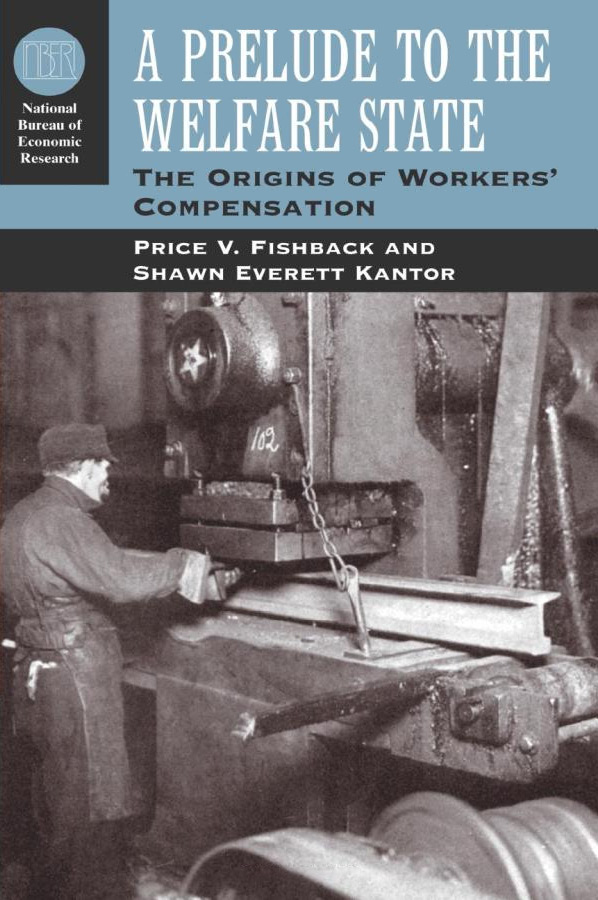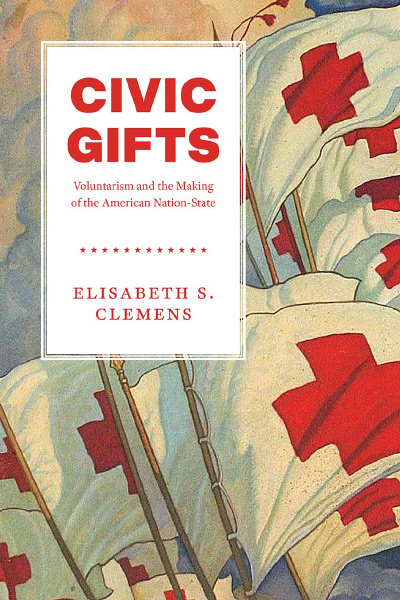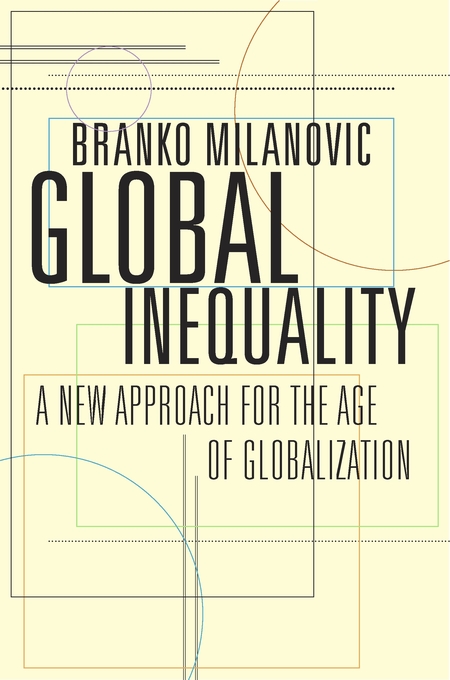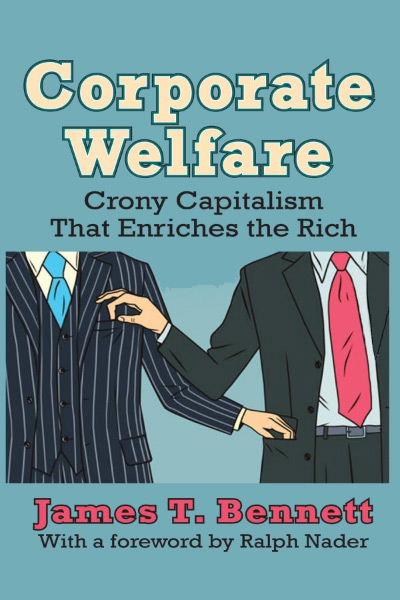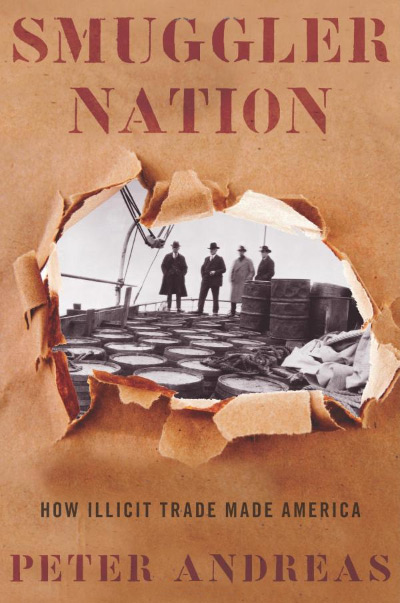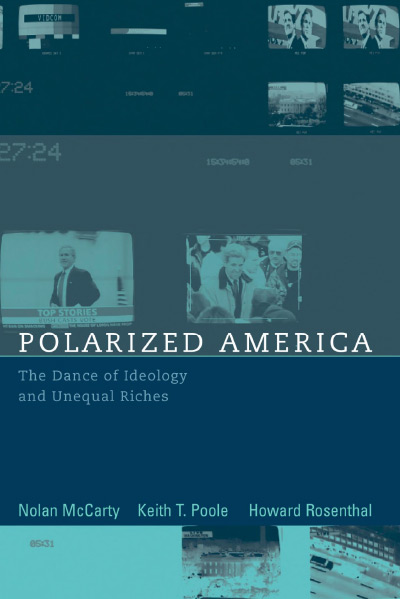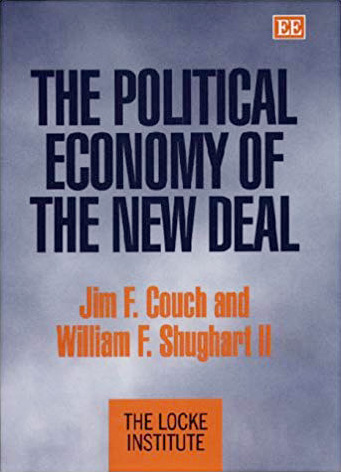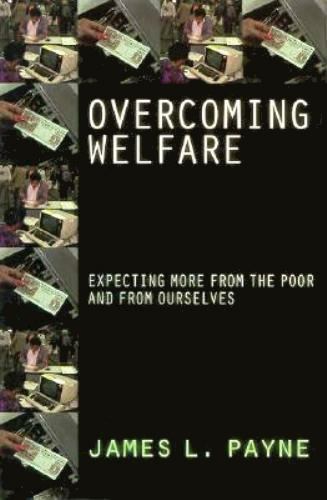Why has government grown so enormous? Given the colossal size of the federal government in the United States and its pervasive influence on our economic lives, it is surprising that the growth of government isn’t the subject of most history books written about the twentieth century. Unfortunately, the list of good books on the subject is surprisingly short. Fortunately, Price Fishback and Shawn Kantor have written a book that can be added to that short list. Indeed, their book, with its rigorous analysis of both markets and politics, is a model for others to follow.
There are several competing theories about the rise of big government. One maintains that government has grown because of the self-serving efforts of concentrated, rent-seeking “special interests”—everything from the military-industrial complex to the labor unions. Another focuses on the role of self-serving government bureaucrats and employees. A third argues that much government growth can be traced to crises during which government expanded and after which it didn’t shrink proportionately. A final explanation suggests that voters have simply desired larger government to help them deal with the complexities of modern life and to calm their insecurities. This last theory can be coupled with the extension of the franchise to cover previously excluded groups who have desired more redistribution.
My colleague Jac Heckelman and I recently surveyed economists, political scientists, and public-choice scholars and found considerable support for all five of these explanations. Our fellow economists give the highest marks to special interests, followed by bureaucrats, crises, voter desires, and franchise extension. Other groups’ rankings are similar. Collectively these scholars suggest that the modern welfare state arrived in part by accident, in part by desire, and in part from a dysfunctional political system.
Before the crises of World War I and the Great Depression, the size and scope of government were comfortably small, and suggestions that government string up a welfare safety net were greeted extremely skeptically. In the first decades of the twentieth century, “progressives” called for unemployment insurance, sickness insurance, and transfers to the aged, but these proposals came to naught until the unexpected crisis of the Great Depression occurred. However, one major initiative did come to life in that pre-Depression period: the workers’ compensation system. Fishback and Kantor’s exhaustive research provides new insights into why almost all states adopted workers’ compensation laws between 1910 and 1921, even though related reform proposals were stillborn.
Fishback and Kantor begin by examining the status quo before the passage of workers’ compensation laws. Under the negligence system of liability, employers were required to exercise “due care” in protecting their workers from danger, but in the case of an accident they could escape liability by establishing any of three defenses: that the employee had assumed the ordinary risks associated with the job; that a coworker had caused the accident; or that the worker himself had not exercised due care. In practice, this system gave rise to “wildly nonuniform” (p. 32) payments to accident victims and their families; after fatalities, roughly 40 percent of families received no payment at all. Payments were low and uncertain, and few families received benefits exceeding the deceased worker’s annual earnings. After the adoption of workers’ compensation laws, most of the uncertainty disappeared. Employers (or their insurers) were required to pay standard benefits spelled out by law, so the benefits or medical expenses paid to accident victims, as a share of payroll, rose by 75 to 200 percent. Fishback and Kantor estimate that almost all victims received higher benefit payments after the adoption of workers’ compensation; only the small fraction that had won big awards under the previous system (between 3 and 15 percent of the cases in the states for which data are suitable) were worse off. Because of the greater certainty, families could significantly reduce their savings. Another implication of the switch to the new system was that individual employers had a much greater incentive to improve workplace safety. Ironically, however, accident and fatality rates actually increased in some industries, especially in workplaces (such as coal mines) where workers could not be closely supervised and where they bore less of the cost of an injury because of the new, higher accident benefits.
Earlier observers knew that the new system protected workers much better, and many concluded that the passage of workers’ compensation laws constituted a major victory of workers over employers. Fishback and Kantor conclude otherwise. They show that employers did not generally lose, even though they substantially increased payments for accidents (or for accident insurance). The key to this paradox is that workers’ wages usually fell after the passage of workers’ compensation laws. Most labor markets at the time were highly competitive, and the demand for labor was fairly elastic, much as it is today. Therefore, this “tax” imposed on employers was shifted to employees, just as the employer’s share of today’s Social Security tax is borne almost entirely by workers. Fishback and Kantor find that the adoption of workers’ compensation pushed wages down by about 2.2 percent in the coal industry and 1.6 percent in the lumber industry—roughly the magnitude of the additional costs of the system. On the other hand, wages fell only approximately 0.3 percent in the heavily unionized building trades, so workers there did gain at the expense of their employers.
Fishback and Kantor’s central conclusion is that workers and employers both gained with the passage of workers’ compensation laws. The third major player— insurers—also gained from an expansion of business. Thus, the laws received support from a broad coalition. Nevertheless, the debates over the exact provisions of each state’s statute were often quite contentious. Essentially, each state mandated that all the workers in the state purchase (through their employer) a specific insurance package. Employers desired a package that included incentives for individual workers to work both safely and productively. Some employers hoped to establish a system that would force others to subsidize them. Employees disagreed among themselves, too. Better-paid workers generally desired more insurance than more poorly paid workers. It was as if all workers were required by law to buy (through their employers) a car, and individual tastes about the best make and model differed—some wanted to pay for a Duesenberg, others preferred a less-expensive, less-luxurious Model T.
Workers’ compensation systems essentially required all employees to purchase accident insurance via a lower wage, but why did government need to step in to mandate that purchase? Why didn’t employers voluntarily offer insurance as a job perk before they were forced to so do? Does this case represent the market’s failing to achieve efficiency? Oddly, the answer is no. Many employers would have been willing to offer this perk if they could have gotten employees to agree contractually to accept the predetermined payment while surrendering the right to sue for additional damages. They did not offer such a contract, however, because the courts would not enforce it. Courts would not allow workers to waive their right to sue unless, of course, a government agency oversaw the entire system. That oversight is essentially what was adopted in the workers’ compensation system.
All the major parties (even the trial lawyers, apparently) won in the switch to workers’ comp. The failed “reforms” of the era—sickness insurance, old-age pensions, and unemployment insurance—could not find a comparable, winning coalition. What determined the timing of the switch from negligence liability to workers’ compensation? Why did it occur during the 1910s? Fishback and Kantor examine the timing of adoption across states and conclude that “progressive” politicians played only a marginal role. The strength of employer and worker interest groups was crucial. For example, states with smaller manufacturing sectors adopted workers’ compensation later, and more highly unionized states switched sooner. The occurrence of a crisis in the old liability system was also extremely important. Many states’ courts had become unwilling to accept the employers’ standard defenses (i.e., that the employee had assumed the ordinary risks associated with the job, that the accident was a coworker’s fault, etc.), and during the decade before workers’ compensation laws were adopted, many states passed legislation barring the use of the traditional defenses. This legislative action caused a crisis as employers’ accident insurance premiums soared, yet many workers still received no payments. Probably the greatest shortcoming of this book is a failure to go back one more step to explain the origins of this crisis in greater detail. Why did the change in attitude—among judges, juries, and later legislators—toward the old negligence rules come about at this time? Whatever the reasons, the origin of the workers’ compensation system, like the growth of government during much of the rest of the twentieth century, hinged crucially on a crisis. The system was supported by several distinct “special interests,” but those interests encompassed much of the electorate.
I am skeptical, however, about Fishback and Kantor’s thinly supported suggestion that workers’ compensation was a “prelude to the welfare state” and “a key early link in the chain establishing the American welfare state” (p. 4). Unlike the welfare state, workers’ compensation involved very little redistribution—compare it to the welfare state’s quintessential program, the intergenerationally redistributive Ponzi scheme we affectionately call Social Security. Also unlike the welfare state, workers’ compensation involved very little governmental bureaucracy and micromanagement— compare the Occupational Safety and Health Administration. Instead, it effectively fixed an earlier problem created by government, and (except in a few states) it relied almost exclusively on the market, much as we currently do with tax incentives for employers to provide health insurance to their workers.
Ultimately, then, Fishback and Kantor’s painstaking analysis gives a clear picture of the operation of the American market and political system in an era when the logic of the welfare state was still generally rejected and when other programs that eventually became part of the welfare state (old-age pensions, unemployment insurance and subsidies, and sickness insurance) were not politically viable.
| Other Independent Review articles by Robert M. Whaples | ||
| Spring 2025 | Millennials, Gen Zs, Capitalism, Socialism, and Confusion | |
| Spring 2025 | Not Stolen: The Truth about European Colonialism in the New World | |
| Spring 2025 | Green Breakdown: The Coming Renewable Energy Failure | |
| [View All (106)] | ||


